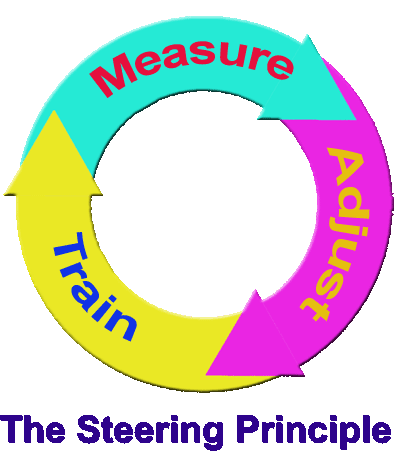Have been reading this book. Very informative.
The following made me chuckle,
"The hypothesis has, for quite some time, been put forth that training at maximal lactate steady state was the magic and optimal method to improve the athletes endurance (aerobic capacity / power ). However nothing is further from the truth."
The above was referring to all endurance sports not only swimming.
Controversial?
He is very keen on training the slow twitch fibres with low intensity ( spiced with hard short efforts early in the session) and being very sparing with harder efforts so as to allow recovery.
The following are not quotes but some notes I made.
Rest or regenerative workouts will make up most of an athletes training time.
Production new enzymes proteins may take days to complete.
Fast twitch athletes can do more intense short hard spice sessions but slow twitch must restrict it. Fast twitchers need to be trained differently to slow twitchers.
Slow twitch fibres are fully used at even low power so long sessions do not need to be fast or hard. Spice the long easy efforts with some hard fast short efforts early in the session.
it is advisable to grant the swimmer a complete day of rest ( a day with no training ) each week but never the day after competition.
The following made me chuckle,
"The hypothesis has, for quite some time, been put forth that training at maximal lactate steady state was the magic and optimal method to improve the athletes endurance (aerobic capacity / power ). However nothing is further from the truth."
The above was referring to all endurance sports not only swimming.
Controversial?
He is very keen on training the slow twitch fibres with low intensity ( spiced with hard short efforts early in the session) and being very sparing with harder efforts so as to allow recovery.
The following are not quotes but some notes I made.
Rest or regenerative workouts will make up most of an athletes training time.
Production new enzymes proteins may take days to complete.
Fast twitch athletes can do more intense short hard spice sessions but slow twitch must restrict it. Fast twitchers need to be trained differently to slow twitchers.
Slow twitch fibres are fully used at even low power so long sessions do not need to be fast or hard. Spice the long easy efforts with some hard fast short efforts early in the session.
it is advisable to grant the swimmer a complete day of rest ( a day with no training ) each week but never the day after competition.


